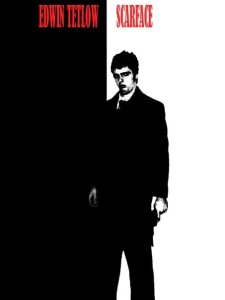After 15 week’s my blog finally concludes… for now. My three nominated post’s are as follow’s:
My blog’s content has mainly consisted of NMP course diary entries and the weekly topics, however I have used them in relation to my personal interests. I established my blog as being particuarly involved in the photo editing community by subscribing to a number of different blogs regarding photoshop. I progressed in later weeks to talk about film medium’s in this case Stock Motion. I used my blog as a network platform in which to create links to my previous work.
Whilst my blog didn’t recieve a big audience, my discussion about japanese import cars recieved heavy discussion. I think this is because I chose to offer an opinion on the topic rather than simply stating facts hence why it was a debated topic. This also suggests something about the demographic sharing my interests and how they are often critical and competitive for their turn under the spotlight. Of the all the traffic sources I had, all of which were australian. This is perhaps indicative of a popular blogging culture or at least a growing culture among australians.
In regards to the appearence of my blog, I went for a fairly simple layout, however I decided to customise my own custom header which I felt better suited the overall content of my blog. I also used feed’s from flickr and del.icio.us as side bar blocks to expand my blog connectivity as well as to acknowledge similiar work to mine.
To improve the connectivity of my blog I have linked to many seperate pages and blogs, networking different sources of information together. I have also used online video tutorial’s to help demonstrate my photography techniques further to an audience keen enough to learn them. With my post regarding multiplicity, I made links to a popular peer to peer integration website called Stumble Upon, as well as links to media content Stumble Upon had refered me to, hence creating a sort of networking circle.
In terms of the content of the unit I feel that I was learning about things I had already been engaging with, blogging being the obvious example. Before commencing this course I didn’t know what a blog was, despite having used bebo and facebook for years. Also, Multiplicity in particular and how it makes the web possible was a topic I was able to study in detail and gain a greater understanding for.



 Say hello to my little friend (Scarface)
Say hello to my little friend (Scarface) Where’s Brian??? (2 Fast 2 Furious)
Where’s Brian??? (2 Fast 2 Furious)




![viz[7]Google Trends Search Curve for 'Swine Flu' viz[7]Google Trends Search Curve for 'Swine Flu'](https://eddietheman999.files.wordpress.com/2009/06/viz7.png?w=450&h=201)





